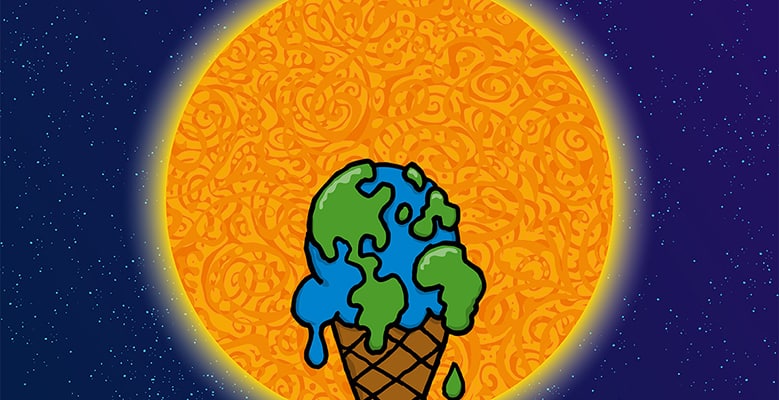February 17, 2016

When you think about climate change’s effect on farming and crop production, you probably picture a small-scale farmer a world away from the US struggling to make ends meet. And that image isn’t wrong; climate change does have a disproportionate impact on developing nations, something the recent UN Climate Summit worked hard to address.
But it isn’t the whole story. If the effects of climate change seem a world away just because we happen to live in a developed country where all our favorite foods – and ice cream flavors – are available at the nearest grocery store, then our assumptions need some tweaking.
A new study shows that contrary to popular belief, crop production in developed countries – the US, Australia and European countries – actually takes a harder hit when faced with extreme weather changes than that of developing countries. Didn’t see that coming, did you? Well, neither did the crops.
Want More Profits? That Comes With Big Risk.
Researchers aren’t quite sure why crop production has been hit 8-11% harder in developed countries versus developing countries. But their best guess is that it’s related to how farmers across the globe do their planting. In developing countries such as those in Southeast Asia and Sub-Saharan Africa, farmers usually plant multiple crops, which minimizes risk in case one fails. For example, if a farmer in Vietnam plants their land with both rice and coffee, they know that even if a drought causes the rice to fail, they’ll still be able to rely on the profits from the coffee crop. It’s the classic method of not putting all your eggs in one basket.
In the US and other developed countries, however, monoculture planting is much more common – planting just one crop as far as the eye can see year after year. So when that crop takes a hit, it’s a big hit. And with climate change spurring on more unpredictable weather patterns, you can expect the hits to continue.
So while farmers in developing countries want to minimize risk, large-scale industrial farms close to home want to maximize profits, much to their detriment when our new nemesis climate change comes a-knockin’.
Extreme Weather Burns Everybody
We’ve already seen drought, heat waves and massive rain and snow precipitation take their toll across the United States and beyond. Farmers depend on predictable weather, and from nuts to maple syrup, the foods they grow are adapted to specific climates— a paradigm that is increasingly being thrown into chaos. The destabilizing impact of volatile weather is already endangering some of our favorite foods, and is threatening Ben & Jerry’s flavors from Chocolate Therapy to Coffee Coffee Buzz Buzz Buzz.
The study was built around a first-ever accounting of the havoc global weather disasters have played on staple cereal production over the past 50 years. And while the study authors aren’t fully clear on why developed countries are increasingly feeling the heat, the fact remains that climate change is having an extreme impact on global food systems across the board.
The bottom line? No one is immune to the toll climate change is taking on our food supply. All the more reason to keep pushing for the goal of 100% clean energy by 2050— the best way for a fair transition off of fossil fuels once and for all.
Recent Articles
Join The Climate Movement
-
With a landmark climate action agreement in place including commitments from 196 countries to fight climate change, now is the time to keep the pressure on and ensure swift action. This climate agreement wouldn’t have happened without millions of people around the world taking action. And we won’t be able to meet the ambitious goals of the Paris Agreement without millions and millions more people taking action in support of a rapid transition to clean energy. Paris was just the beginning, not the end. Let’s get to work towards a greener, cleaner future. Add your voice to the millions demanding action and sign the petition today!


